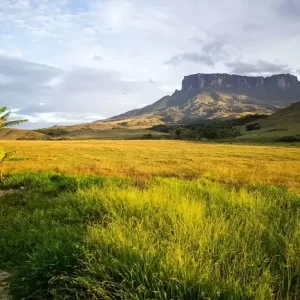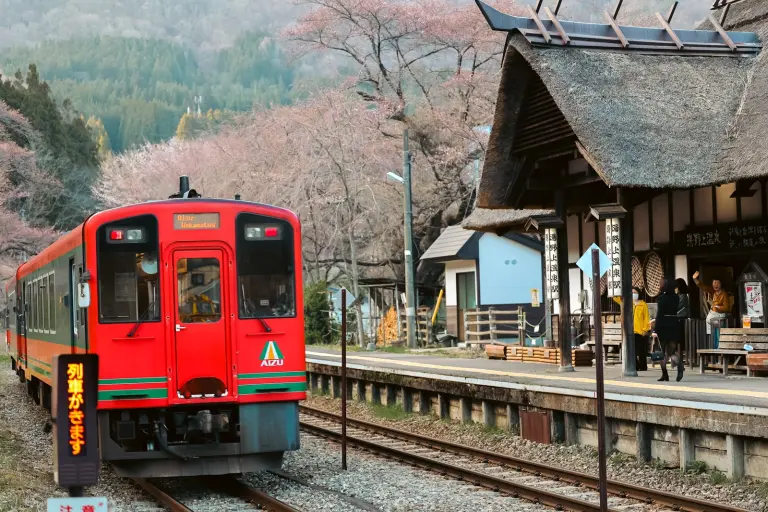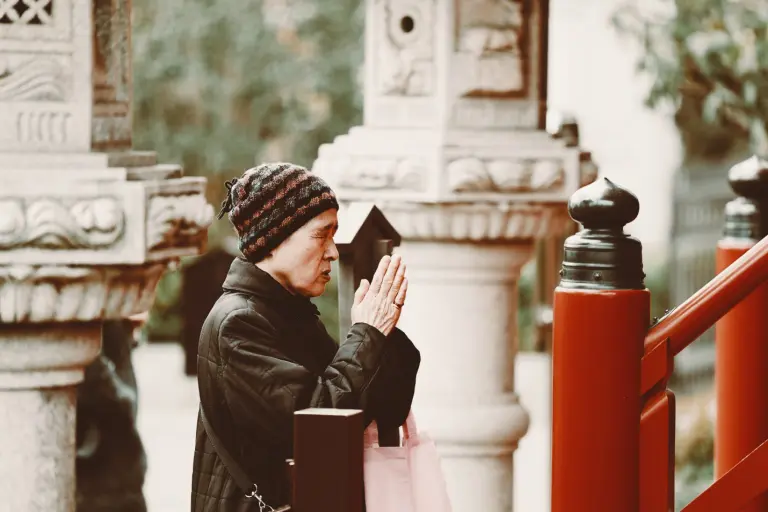Tiger’s Nest Monastery (officially known as Paro Taktsang), often translated as the “Tiger’s Nest Temple,” is one of the most famous tourist destinations in Bhutan and also the country’s most sacred Buddhist site. Perched dramatically on a sheer cliff of the Paro Valley, this iconic monastery has become a symbol of Bhutan, drawing thousands of pilgrims and travelers from around the world to witness its breathtaking beauty and spiritual significance.
Location & Terrain of Taktsang Monastery
Located dramatically on a cliffside, about 900 meters above the Paro Valley and at an elevation of 3,120 meters above sea level, Tiger’s Nest Monastery is a true architectural wonder. While Bhutan is home to many monasteries, what makes Paro Taktsang stand out is its extraordinary religious significance and fascinating history.
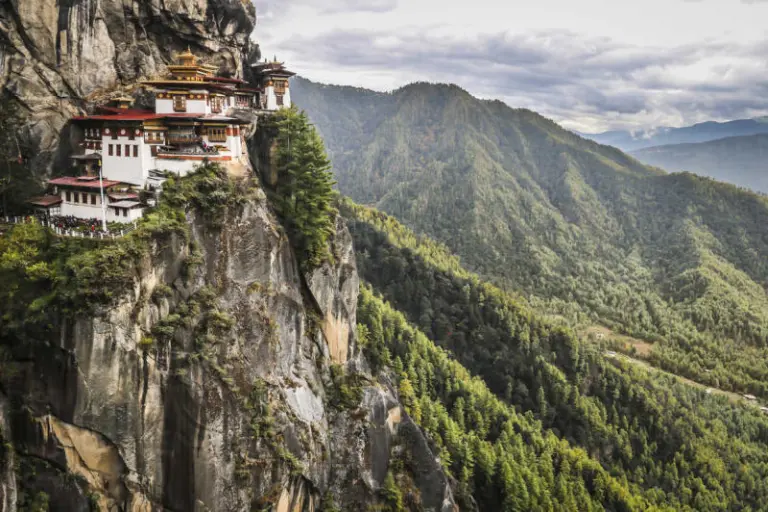
The hike to the monastery covers around 6.4 km in total, offering breathtaking views of the lush Paro Valley. The mystery of how this complex was constructed on such rugged terrain continues to amaze visitors. This sacred site is also one of the few places in Bhutan visited by Guru Rinpoche (Padmasambhava), revered as the “Second Buddha.”
Visiting Tiger’s Nest Monastery is a once-in-a-lifetime experience. The spectacular setting, surrounded by emerald valleys and towering peaks, creates a sense of both wonder and serenity. Its remote location—accessible only by mountain trails—adds to its beauty and spiritual aura while also presenting technical challenges.
Looking up at the monastery from the valley floor, many visitors find it almost impossible to believe that such a place can even be reached.
>> Traveling to Bhutan: What you need to know
The Legend of Tiger’s Nest Monastery
According to Bhutanese legend, in the 8th century, Guru Rinpoche flew from Tibet to this site on the back of a flaming tigress. Here, he meditated for three years, three months, three weeks, three days, and three hours. It was during this retreat that he subdued evil spirits and introduced Vajrayana Buddhism to Bhutan.
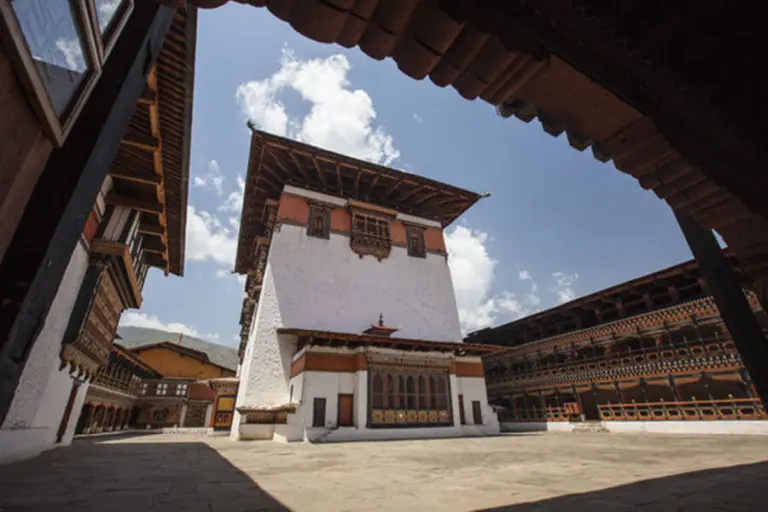
The name “Taktsang”, which means “Tiger’s Nest,” originates from the belief that a tigress once dwelled in one of the caves. Locals also believe that Guru Rinpoche manifested as Dorje Drolo, one of his eight forms, and the tigress was in fact his consort Yeshe Tsogyal, transformed to protect him.
Over the centuries, many Tibetan saints and scholars, including the great yogi Milarepa, came here for meditation. By the 12th–17th centuries, several Tibetan lamas had established monasteries across Bhutan, further enhancing its religious significance.
Architecture of Tiger’s Nest Monastery
Built directly into the cliffside, the monastery is a masterpiece of Bhutanese architecture. The complex consists of three main temples and several meditation caves, the most sacred of which is the cave where Guru Rinpoche is said to have meditated. The interior is adorned with elaborate murals and statues, with many visitors claiming they can still feel his presence inside.
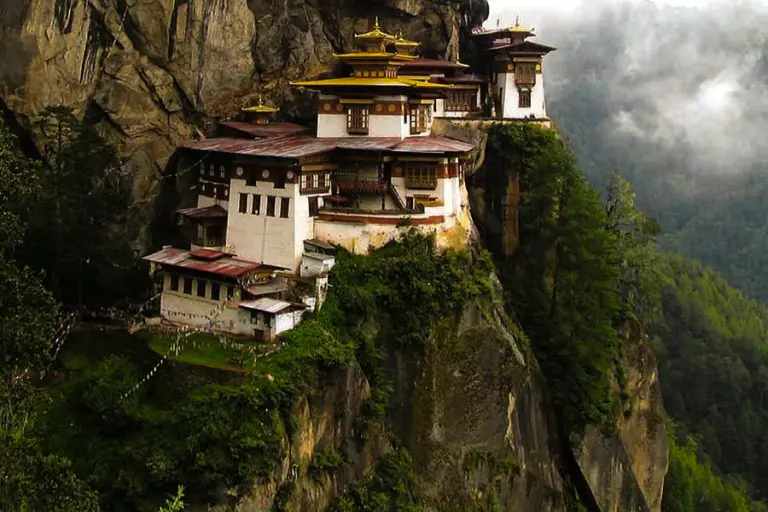
The journey to the monastery begins at the base trailhead, with a hike of around 4 km. Along the way, colorful prayer flags flutter in the wind, symbolizing protection and blessings. The first rest stop is a small cafeteria located about halfway up the trail, offering tea, snacks, and magnificent views of the monastery across the valley.
From there, a 1.4 km trek leads to the best viewpoint of Paro Taktsang, where the monastery appears almost otherworldly, suspended between mountains and clouds. The final 0.6 km stretch is steep but rewarding—once you step through the gates, the fatigue instantly melts away in the face of the stunning panorama.
However, the monastery has also endured hardships. On April 19, 1998, a devastating fire destroyed much of the complex. Despite the loss, it was carefully rebuilt, preserving its sacred legacy.
>> What to know before visiting Bhutan – Dos & Don’ts
Dining Near Tiger’s Nest
A small café situated below the monastery offers refreshments and light snacks. From here, visitors can still enjoy breathtaking views of Paro Taktsang without completing the full trek, making it a pleasant stop for those who cannot manage the entire hike.
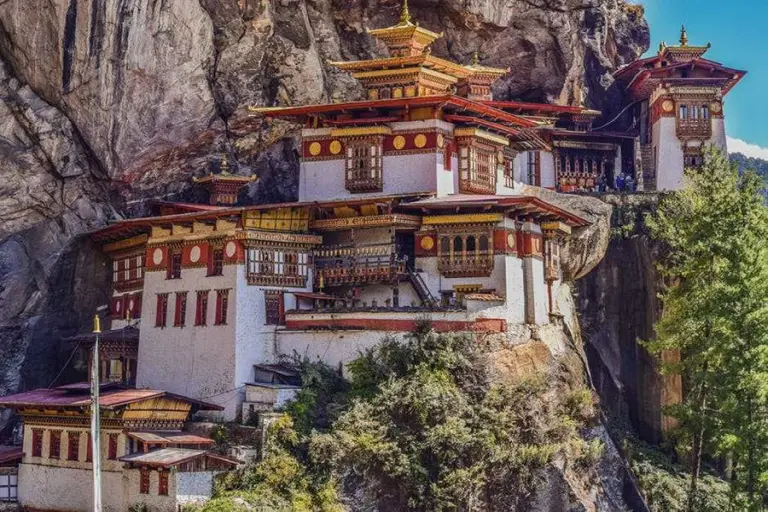
How to Reach Tiger’s Nest Monastery
Paro Valley, home to Bhutan’s only international airport, is the gateway to the monastery. There are three trails leading up:
- The main trail passes through pine forests adorned with colorful prayer flags, symbolizing protection and blessings.
- The other two trails cross a highland area known as the “Plateau of a Hundred Thousand Fairies.”
No vehicles can reach the monastery—hiking is the only option. The trek takes about 4–6 hours round trip, depending on pace. Horses or mules can be hired for part of the way, but the final section must be done on foot.
For most visitors, the hike takes around 2 hours one way from the valley floor. Along the trail, you may encounter monks who generously share food or water to help pilgrims continue their spiritual journey.
At the top, the reward is indescribable: fresh mountain air, drifting clouds, and sweeping views of the Paro Valley—a moment of peace and awe that lingers long after you leave.
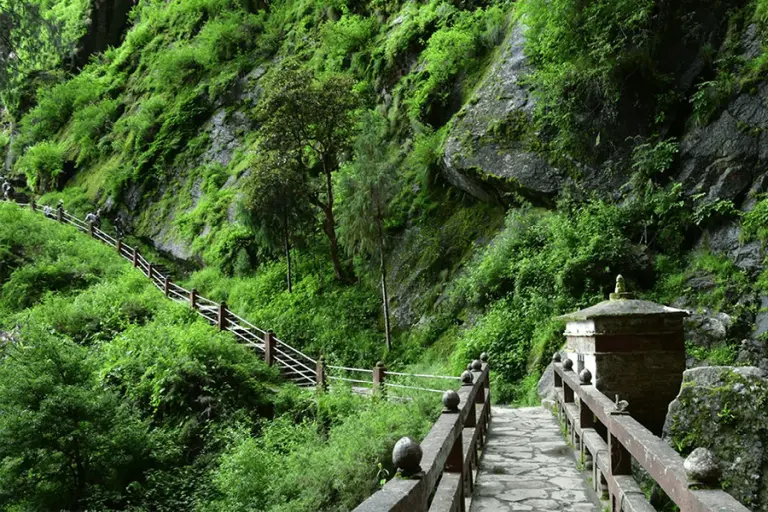
>> Signature Dishes of Bhutanese Cuisine
FAQ
What is the Tiger’s Nest Monastery?
The Tiger’s Nest Monastery, locally known as Paro Taktsang, is Bhutan’s most iconic monastery, perched dramatically on a cliffside at 3,120 meters (10,240 feet) above sea level. It clings to the side of a mountain in Paro Valley and is considered the spiritual jewel of Bhutan.
Why is it called the Tiger’s Nest?
According to legend, Guru Rinpoche (Padmasambhava), the saint who introduced Buddhism to Bhutan, flew to this cliff on the back of a tigress in the 8th century. He meditated in a cave here for three months to subdue evil spirits. The monastery was later built around this sacred cave, hence the name “Tiger’s Nest.”
Why is Tiger’s Nest Monastery important?
It is one of the most sacred Buddhist pilgrimage sites in Bhutan and a symbol of national identity. Every Bhutanese dreams of visiting at least once in their lifetime. The monastery is not just a spiritual retreat but also a cultural treasure that connects Bhutan to its deep Buddhist roots.
How do you get to Tiger’s Nest Monastery?
The monastery can only be reached by hiking, horseback riding (partway), or trekking.
- Starting point: The trail begins about 10 km north of Paro town.
- Hiking time: 2 to 3 hours uphill, depending on fitness level.
- Trail: Steep and challenging but well-marked, with prayer flags lining the path.
- Halfway stop: A teahouse provides rest, food, and a spectacular view of the monastery across the valley.
How difficult is the hike to Tiger’s Nest?
The hike is considered moderately challenging. The trail involves steep ascents and over 700 stone steps near the monastery. While it can be tough, even beginners can complete it with patience and regular breaks. Horses are available for hire to cover the first half of the trail.
What can you see inside Tiger’s Nest Monastery?
The monastery complex consists of four main temples and several meditation caves. Visitors can explore shrines dedicated to Guru Rinpoche, ancient wall paintings, and sacred relics. The cave where Guru Rinpoche meditated is the holiest chamber, though access is restricted to certain areas for pilgrims only.
When is the best time to visit Tiger’s Nest?
- Spring (March–May) and Autumn (September–November): Best seasons for clear skies and pleasant weather.
- Morning visits are recommended since clouds often gather in the afternoon, obscuring the view.
- During the Paro Tsechu Festival (March/April), the monastery becomes even more vibrant with traditional mask dances and Buddhist ceremonies.
What should travelers know before visiting?
- Dress code: Modest clothing covering shoulders and legs is required.
- Shoes: Must be removed before entering the monastery.
- Photography: Not allowed inside the temples.
- Altitude: At over 3,000 meters, take it slow and stay hydrated.
- Respect: This is a sacred site—speak quietly and behave respectfully.
Why is Tiger’s Nest a must-visit in Bhutan?
Tiger’s Nest isn’t just about the breathtaking cliffside view—it embodies Bhutan’s spiritual soul and resilience. The journey itself, with fluttering prayer flags, mountain air, and the sight of the monastery clinging to the cliff, feels like a pilgrimage of the heart.
Visiting Tiger’s Nest Monastery is often described as a life-changing experience—a blend of physical challenge, cultural immersion, and spiritual awakening.
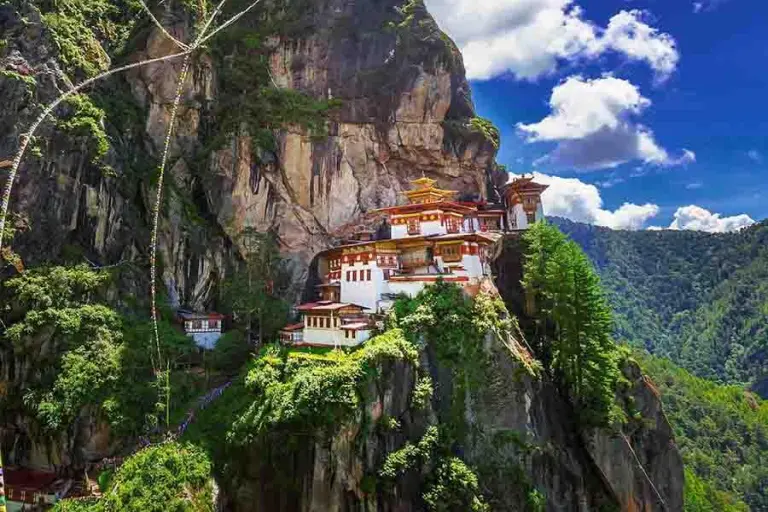
>> Bhutan weather – The best time to visit the land of the Thunder Dragon



